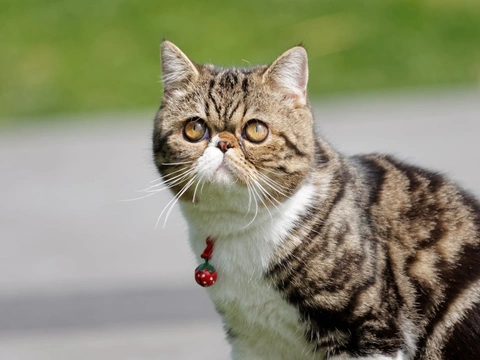
Autosomal Dominant Polycystic Kidney Disease (AD-PKD) in Cats
Autosomal dominant Polycystic kidney disease is a hereditary disease that is now known to affect certain breeds more than others. The disorder can now be identified through a gene test and all cats destined to be used for breeding purposes should be screened for the condition first. This is the only way of preventing the disease from being passed on to offspring. As such any cat with AD-PKD should be spayed or neutered when the time is right for them to undergo the procedure to prevent them from mating.
Breeds Most at Risk
As previously mentioned, there are certain breeds that are known to be more predisposed to inheriting autosomal dominant Polycystic kidney disease than others and this includes the following:
- Persian
- Exotic shorthair
- British shorthair
- Asian
- Burmilla
- Bombay
- Tiffanie
- Birman
- Cornish Rex
- Devon Rex
- Ragdoll
- Snowshoe
The Causes
Autosomal dominant Polycystic kidney disease (AD-PKD) is a hereditary disorder where cysts develop on a cat's kidneys. It is a progressive disease where cysts which are present from birth, but they start to get bigger as time goes by. As the cysts grow, they start to cause problems in that they interfere with a cat's kidney function and the end result is total kidney failure. The rate at which the cysts develop can vary, but when a cat is diagnosed with the condition, they typically only live until they are around seven years old. With this said, some cats succumb to kidney failure a lot sooner whereas other may survive a lot longer, eventually dying of another disorder altogether.
The Genetic Link
Research into AD-PKD has established that it is an autosomal dominant which in short means that a kitten can inherit the disorder even if only one of the parents has the damaging gene. As such no cat known to suffer from the condition should ever be used in a breeding programme. Cats free of the condition cannot pass it on to their offspring.
Symptoms to Watch Out For
When cats develop the disorder, the symptoms of there being something wrong typically include the following:
- A loss of weight
- Depression
- Lethargy
- An increased thirst - referred to as polydipsia
- An excessive desire to urinate - referred to as polyuria
- Vomiting
- Enlarged kidneys
Diagnosing the Condition
A vet would need to have a cat's full medical history and ideally, they would also need to know the cat's ancestry too. Other tests a vet would suggest carrying out could include the following:
- An ultrasound
- A genetic test which consists of a buccal swab
Treatment Options
Unfortunately, it is not possible to slow the growth of cysts once they start to develop on a cat’s kidneys and neither can they be surgically removed. As the cysts get bigger, they interfere with a cat's kidney function which means the organ is no longer able to filter out damaging toxins from the blood. This can quickly turn into a life-threatening situation and as such, a cat would need to be treated as a matter of urgency if their kidneys no longer function properly. A vet would treat a cat for chronic renal failure and may well recommend the following treatments:
- To rehydrate a cat by administering fluids intravenously, in which case a cat would need to be hospitalised
- Prescribing a specific diet that contains less protein and phosphorus
- Prescribing phosphorus binders
- Treating hypertension - which is often associated with AD-PKD
- Prescribing anti-nausea and antacid drugs
Prognosis
The prognosis for cats diagnosed as suffering from AD-PKD varies a lot from cat to cat because it depends on how many damaging cysts have formed on their kidneys and how large they have become. On top of this, the prognosis also depends on how fast the cysts grow. Cats with only a few cysts on their kidneys may live to a ripe old age, whereas other cats with larger and more cysts could succumb to the disorder very quickly.
The International Cat Care AD-PKD Negative Register
Breeders and other people who breed cats known to be predisposed to suffering from AD-PKD should always have stud cats registered as being free of the condition. Potential owners can check the Negative Register to reassure themselves that kittens and cats do not suffer from the condition and therefore are not likely to develop any of the systems associated with it during the course of their lives. The register is open for anyone to use with the only provisos being that any swab that's taken must have been carried out by a qualified vet and that cats are microchipped. People registering their cats would also need to follow the necessary online procedures.
Testing Cats for AD-PKD
Breeds known to suffer from the condition can be tested for AD-PKD and when the tests prove negative, cats can go on the ICC PKD negative register. Test results are interpreted as follows:
Normal AD-PKD genetic test result - this establishes that a cat does not have the damaging gene mutation and therefore would not develop the disorder
Affected AD-PKD genetic test result - this establishes that a cat has one normal gene and one mutated copy of the PKD1 gene which is closely associated with the disorder. A cat would develop the condition and pass it on to their offspring if used in a breeding programme. As such, a cat should be spayed or neutered when the time is right to prevent them from mating



